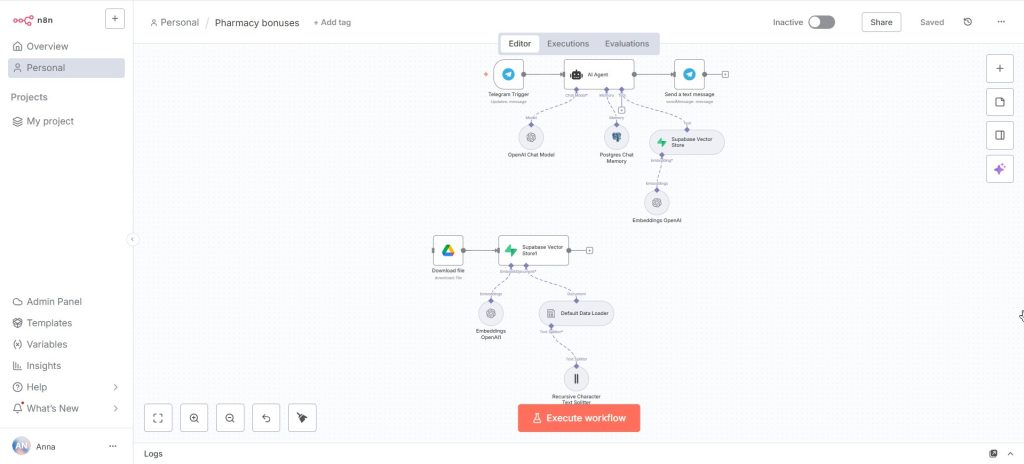The Challenge: Scaling Personalized Customer Engagement

The Solution: A Custom-Built AI Assistant
1. Trigger-Based Interaction: The AI agent is not just reactive; it proactively messages users based on specific triggers, such as the launch of a new promotion relevant to them, a period of inactivity leading to missed bonuses, or even technical issues with their account.
2. Personalized Bonus Consultation: When prompted, the AI can access the user’s data to provide a complete picture of their bonus status. It can answer questions like:
- “What is my current bonus balance?”
- “How many bonuses have I missed out on?”
- “What’s the best strategy for me to maximize my bonuses right now?”
3. Dynamic Data Integration: The assistant connects to a database (demonstrated with Supabase and PostgreSQL, but designed to work with the client’s existing Vertica DB via API). It pulls specific data points like bonus balance, missed opportunities, active promotions, and last order date to generate its responses.
- “Hi John, there’s a new promotion from Manufacturer X! You can earn 200 extra points on your next purchase of $50 or more.”
- “We noticed you haven’t placed an order in a while and have missed out on 150 potential bonus points. Let us help you get them back!”
Architecture and My Role
- Workflow Automation: n8n was used to orchestrate the entire process, from receiving a user’s message to fetching data and sending a response.
- Vector Database: Supabase was configured to store and efficiently retrieve information about promotions and user data.
- AI & Memory: A PostgreSQL database provided the AI with memory, allowing it to recall past interactions and maintain context in a conversation.
The Outcome
Check out our post on AI content automation for YouTube Shorts.
